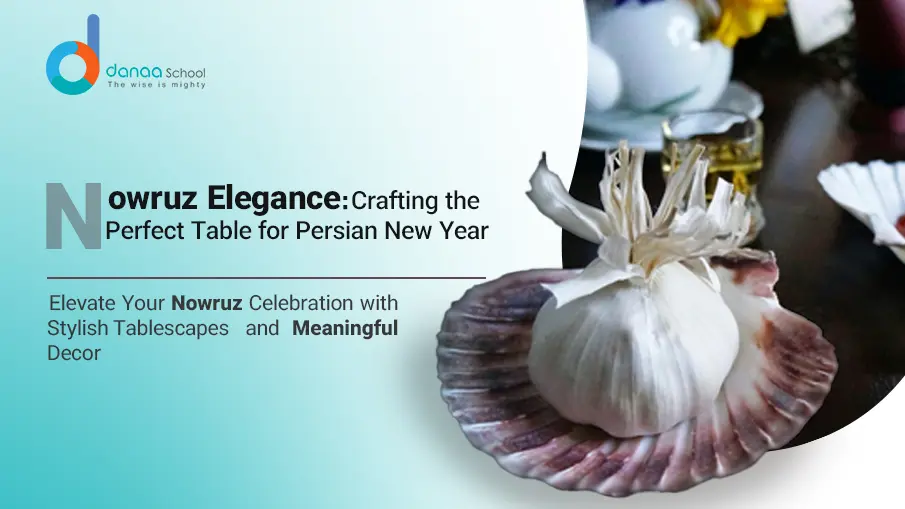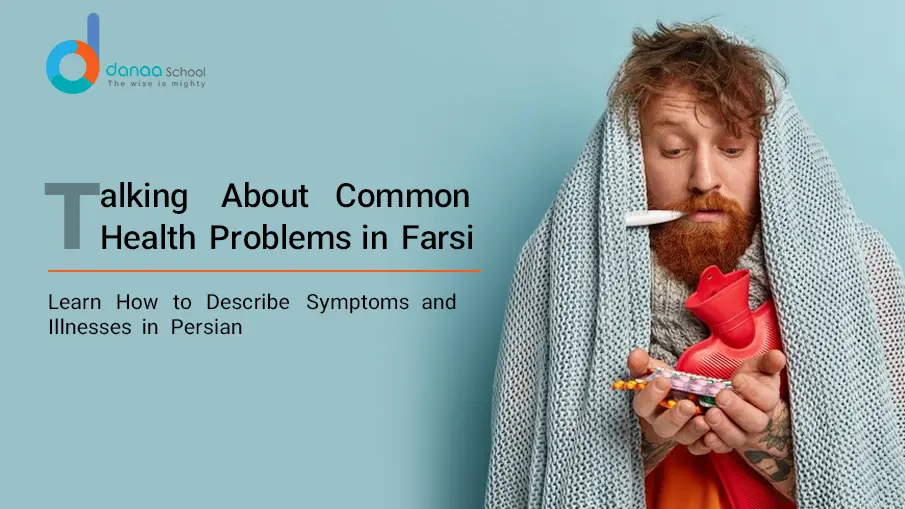Nowruz Table: Setting the Scene for a Festive Celebration, the Persian New Year, is a time of immense significance and jubilation for millions of people around the world. This ancient tradition marks the arrival of spring and symbolizes renewal, rejuvenation, and the promise of new beginnings. At the heart of Nowruz celebrations lies the Nowruz table, a focal point of family gatherings and communal festivities.
The preparation of the Nowruz table is steeped in centuries-old customs and rituals, each element meticulously chosen to convey profound meanings and blessings for the year ahead. In this article, we’ll explore the intricate tapestry of Nowruz traditions, exploring the symbolism of “haft sin” and the rich cultural heritage behind the elements that adorn the table.
Understanding Haft Sin Nowruz
Haft Sin, or the “Seven S’s,” is a cornerstone of Nowruz celebrations, embodying the essence of renewal and abundance. The tradition entails setting up a table adorned with seven specific items, each beginning with the Persian letter ‘S.’
These items hold deep symbolic significance, representing various facets of life, nature, and aspirations for the future. From sprouted wheat symbolizing growth and fertility to sweet pudding signifying affluence and prosperity, each element contributes to the vibrant tapestry of Nowruz symbolism.
What Is on a Nowruz Table?
The Nowruz table is a visual feast featuring various symbolic items representing blessings, abundance, and good fortune for the coming year. In addition to the seven Haft Sin elements, the table may include painted eggs, fresh flowers, fruits, nuts, sweets, and candles, each contributing to the celebration’s festive ambiance and spiritual significance.
What Are the 7 Sins in Nowruz?
The seven sins in Nowruz refer to the seven specific items starting with the Persian letter ‘S’ that are traditionally displayed on the Haft Sin table: Sabzeh,
Samanu, Senjed, Seer, Seeb, Somāq, and Serkeh. These items symbolize various aspects of life, nature, and blessings, serving as a focal point for the Nowruz celebration and a source of inspiration for the year ahead.
The Seven S’s of Nowruz
1. Sabzeh (Sprouts):
Sabzeh, or sprouted grains, epitomizes the rejuvenation of nature and the promise of new life. Wheat, barley, or lentils are commonly used to create lush greenery on the Nowruz table, symbolizing the arrival of spring and the renewal of the earth’s bounty.
2. Samanu (Wheat Pudding):
Samanu, a sweet pudding made from germinated wheat, represents life’s abundance, fertility, and sweetness. Its rich, velvety texture embodies the richness of blessings bestowed upon the household, fostering a sense of gratitude and contentment.
3. Senjed (Dried Oleaster):
Senjed, or dried oleaster fruit, symbolizes love, affection, and fruitful connections between individuals. As a staple on the Nowruz table, senjed serves as a reminder of the importance of nurturing relationships and fostering unity within the community.
4. Seer (Garlic):
Seer, or garlic, holds potent symbolism in Nowruz traditions, representing health, vitality, and protection against evil forces. Its intense aroma is believed to ward off sickness and evil spirits, ensuring a year of well-being and prosperity.
5. Seeb (Apple):
Seeb, or apple, embodies beauty, health, and the abundance of nature’s bounty. Its crisp sweetness delights the senses, evoking joy and appreciation for simple pleasures.
6. Somāq (Sumac):
Somāq, or sumac, symbolizes the triumph of light over darkness and the promise of a bright future. Its vibrant red hue evokes the warmth of the sun and the vitality of springtime, infusing the Nowruz table with energy and optimism.
7. Serkeh (Vinegar):
Serkeh, or vinegar, represents wisdom, patience, and endurance gained through life’s experiences. Its tangy flavor serves as a reminder of the bittersweet journey of existence, imparting lessons learned and virtues cultivated along the way.
Nowruz Haftsin Decoration
Decorating the Nowruz table is an art form, with each element carefully arranged to create a visually stunning tableau. Elaborate centerpieces, embroidered tablecloths, and intricately woven rugs serve as the backdrop for the Haft Sin items, adding depth and dimension to the display. Candles flicker softly, casting a warm glow over the table, while bowls of fruits, nuts, and sweets entice guests with their tantalizing aromas and vibrant colors.
Nowruz Table Items and Their Meanings
Beyond their aesthetic appeal, each item on the Nowruz table carries profound symbolic significance, connecting participants to their cultural heritage and spiritual beliefs. Setting up the Haft Sin table is a ritualistic practice that fosters a sense of continuity and connection with the past.
As families gather around the table to partake in the rituals and share in the festivities, they are reminded of the values that bind them together as a community, fostering a sense of unity and belonging.
Celebrating with Nowruz Eggs and Flowers
While the Haft Sin items form the centerpiece of the Nowruz table, additional elements add to the celebration’s festive ambiance and aesthetic allure. Painted eggs, known as “token more,” symbolize fertility, rebirth, and the cyclical nature of life. These intricately decorated eggs serve as tokens of good fortune and blessings for the year ahead, their vibrant colors and patterns reflecting the joyous spirit of Nowruz.
Fresh flowers, such as hyacinths, tulips, narcissus, and roses, play a pivotal role in Nowruz celebrations, adorning the table with beauty, fragrance, and symbolism. These blooms herald the arrival of spring, symbolizing renewal, growth, and the abundance of nature. Their vibrant colors and delicate petals infuse the Nowruz table with freshness and vitality, evoking a sense of wonder and appreciation for the wonders of creation.
Nowruz Around the World
Nowruz is not confined to Iran but is celebrated in various countries across the Middle East, Central Asia, and parts of South Asia. While the core traditions remain the same, each region adds a unique flair to the festivities, incorporating local customs, foods, and symbols. From Afghanistan to Azerbaijan, Tajikistan to Turkey, Nowruz is a unifying force that transcends borders and brings people together to celebrate life, renewal and hope for the future.
Regional Variations of Haft Sin
Different cultures have variations of the Haft Sin table, reflecting the diverse tapestry of Nowruz traditions. In Afghanistan, for example, the Haft Sin table may include items such as garlic, vinegar, and coins, while in Azerbaijan, pomegranates, nuts, and sweets are commonly featured. Despite these differences, the underlying spirit of Nowruz remains the same, fostering a sense of unity and solidarity among diverse communities.
What Is the Symbolism of Nowruz?
Nowruz symbolizes renewal, rebirth, and the triumph of light over darkness. It marks the beginning of spring, a time of rejuvenation and new beginnings. The rituals and traditions associated with Nowruz reflect the Persian people’s deep-rooted cultural beliefs and spiritual values, emphasizing the importance of family, community, and the eternal cycle of life.
What Do Iranians Do on Nowruz?
Iranians celebrate Nowruz with various rituals and customs, including cleaning their homes, visiting friends and family, preparing special dishes, exchanging gifts, and participating in festive gatherings. The days leading up to Nowruz are filled with anticipation and excitement as people prepare for the arrival of the new year, eagerly awaiting the moment when they can gather around the Nowruz table to usher in the spring season with joy and reverence.
What Do Persians do for Nowruz?
Persians celebrate Nowruz by setting up the Haft Sin table, attending traditional ceremonies, reciting poetry, playing music, dancing, and enjoying festive meals with loved ones. The Nowruz celebration is a time of unity and solidarity, as people come together to reaffirm their cultural identity and celebrate the rich tapestry of Persian heritage. From Tehran to Los Angeles, Shiraz to Toronto, Persians around the world join in the festivities, carrying on the traditions of their ancestors and passing them down to future generations.
Do Persians Celebrate Nowruz?
Yes, Nowruz is widely celebrated by Persians and people of Persian descent around the world as a cultural and religious holiday marking the beginning of the new year. The celebration of Nowruz is a powerful reminder of the resilience and endurance of the Persian people, who have preserved their cultural heritage and traditions despite centuries of upheaval and adversity. As Persians gather to celebrate Nowruz each year, they honor their past, celebrate their present, and look forward to a future filled with hope, prosperity, and peace.
Conclusion
The Nowruz table is more than just a decorative display; it reflects the rich tapestry of Persian culture, traditions, and values. As families gather around this symbolic tableau, they come together to honor the past, celebrate the present, and embrace the future with hope and optimism. The rituals and customs associated with Nowruz serve as a testament to the enduring spirit of the Persian people, who continue to celebrate their heritage and preserve their traditions with pride and reverence.
Join Danaa School today and start a journey to deepen your understanding of Iranian culture, literature, and diverse celebrations! Immerse yourself in the rich tapestry of traditions, stories, and festivities that make Iran unique.
FAQs
1. **Why are seven specific items chosen for the Haft Sin table?**
– The number seven is special in Persian culture, representing perfection and completeness. Each item starting with ‘S’ symbolizes blessings and wishes for the new year.
2. **Can variations of the Haft Sin items be included on the Nowruz table?**
– Absolutely! While the traditional seven items are commonly used, families often personalize their Nowruz table with additional symbols and decorations that hold significance to them.
3. **What is the significance of the Nowruz eggs?**
– Nowruz eggs symbolize fertility, birth, and new beginnings. They are often exchanged as gifts and displayed prominently on the Nowruz table.
4. **How long does the Nowruz celebration last?**
– Nowruz festivities typically span over 13 days, symbolizing the 13-day journey of the sun from the vernal equinox to the beginning of spring.
5. **Are there any specific rituals associated with the Nowruz table?**
– Yes, various rituals and customs are observed during Nowruz, including reciting poetry, visiting friends and family, and partaking in festive meals together.
6. **What is the significance of the Nowruz mirror?**
– The Nowruz mirror, often placed on the Haft Sin table, symbolizes self-reflection, introspection, and the contemplation of one’s actions and intentions. It serves as a reminder to look inward, assess one’s character, and strive for personal growth and improvement in the coming year.
7. **Why is the Nowruz table traditionally set facing east?**
– Setting the Nowruz table facing east symbolizes welcoming the rising sun and embracing the dawn of a new day, a new year, and new opportunities. It represents a forward-looking attitude, optimism for the future, and a readiness to start a journey of renewal and transformation.







